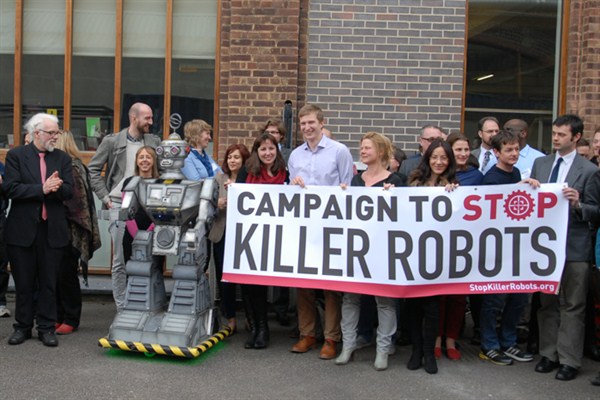In April 2013, outside the steps of Parliament in London, a group of nongovernmental organizations launched a new campaign to ban the use of fully autonomous weapons. Political entrepreneurs calling themselves the International Committee for Robot Arms Control had been raising concern over this issue since 2004, but their calls for a killer robot ban had been virtually ignored by the advocacy community. Things changed dramatically in 2012 when the well-known NGO Human Rights Watch published a report calling for such a ban. Within a month, nine well-known human security organizations had joined the steering committee for a new campaign. In April 2013, 30 NGOs showed up to a London conference on the topic prior to the launch of what was widely hailed as the “next landmine ban campaign.” By mid-May, 29 organizations had officially joined a growing list of signatories. Since then, “killer robots” have been creating the biggest “human security” buzz since cluster munitions, with a U.N. conference this year leading to ongoing discussions among governments.
What happened between 2004 and 2012? Why did well-known organizations like Human Rights Watch pay so little attention to autonomous weapons for so long, despite lobbying from norm entrepreneurs, and why did this change? Why did other human security organizations avoid the issue for so long but join the campaign so readily once Human Rights Watch took the lead? And why did humanitarian campaigners set their sights on banning a category of weapons that doesn’t yet exist and about which the public is barely aware, rather than banning, for example, depleted uranium munitions, said to harm the health of thousands in conflict zones, or pilotless drones, an issue with widespread resonance in the public eye?
In my new book “‘Lost’ Causes: Agenda Vetting in Global Issue Networks and the Shaping of Human Security,” I trace the origins of this campaign as part of an answer to a bigger question: Why do some issues and not others attract global policy attention? The Campaign to Stop Killer Robots is but one of many cases discussed in the book, but it illustrates two truths about global advocacy work and raises two equally important questions.

